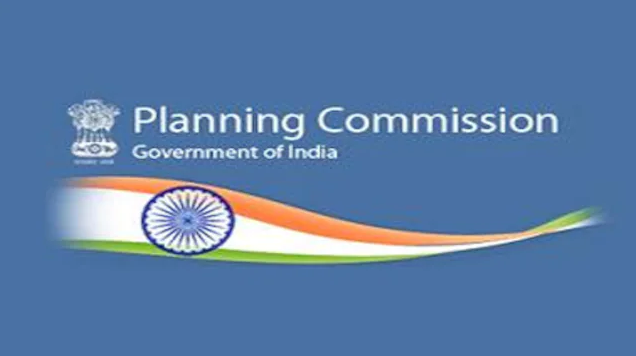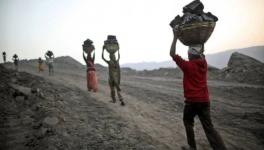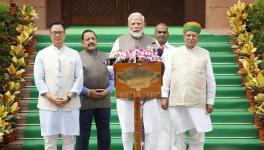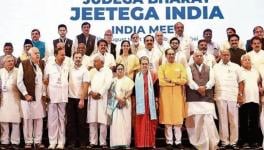India’s ‘No-Plan’ Planning Will Hurt its Weakest Sections the Most

Image Courtesy: Firstpost
When the National Democratic Alliance government did away with the Planning Commission and Five-Year Plans that went back six decades, the leadership was seemingly working to a pre-determined agenda. There were no consultations or debates before such a significant reversal was announced in 2014. It was a demolition-mode decision that appeared to have been taken even before the NDA’s victory lap in that year’s Lok Sabha election.
The policy to move away from planning, with all its checks and balances on arbitrary decision-making, has continued. In the Budget Estimate for 2022-23, the Centre suddenly cut the allocation for the Ministry of Planning to Rs. 321 crore from Rs. 1,062 crore in the previous year, a more than two-thirds reduction. No other ministry has faced such a hefty drop in funding.
Going into the details of this cut reveals how harmful it was. The head of expenditure titled ‘Official Development Assistance for Sustainable Development Goals (SDGs)’ got an allocation of Rs. 581 crore in the BE for 2021-22. It has been reduced to just Rs. 0.1 crore in 2022-23. Just this year, it came to light that India has slipped three places on 17 SDGs adopted as the 2030 Agenda adopted by 192 United Nations member states in 2015. Similarly, the omnibus ‘Ongoing Programs and Schemes’ saw an actual expenditure of Rs. 309 crore in 2020-21. Still, the following year, the Budget Estimate was slashed to just Rs. 32 crores and it was further revised this year to Rs. 6 crores. In other words, no efforts were made to revive these expenses in subsequent budgets.
The allocations for planned economic development are falling, including schemes and policies whose remit goes beyond the Ministry of Planning. So, while some states are initiating decentralised planning, such as Kerala, the Centre is cutting expenses in this category vis-a-vis states. It essentially means that fund allocation is centralising, and the Union Finance Ministry has far more discretion to determine where resources go. Of late, several states have complained that there is growing discretionary expenditure by the Centre in sectors that are within the domain of States. Several have complained that the end of the planning process has meant more rather than less centralising of resources and allocations, which was the stated objective behind ending the Planning Commission. The Niti Aayog did shift into creating a three-year roadmaps in 2017, along with 15-year and seven-year plans. However, they were broad policy objectives and not much more. For instance, Protiva Kundu, an expert with the Centre for Budget and Governance Accountability, pointed out in a paper published in May 2018 in the Economic and Political Weekly, that the Aayog’s three-year strategy for education did not have a proposal on raising resources, although it involved expenses that states would have to undertake. Further, the share of allocation for education in the Union Budget has also not changed in recent years.
In this vein, efforts to coordinate Centre-State development projects also seem to get lower priority now. The ‘Management Support to Rural Development Programs and Strengthening of District Planning Process’, which falls under the Department of Rural Development, has also seen an annual budget cut from Rs. 364 crore to Rs. 212 crore. In the RE, this amount just fell to Rs. 176 crore. The problem is not just the cut, but the absence of an explanation for what the scheme did, its failures or successes, and why it was de-prioritised. According to previous budget documents, this scheme catered to training, awareness-generation, strengthening of monitoring, and international cooperation. It is not evident if this was discontinued as other departments took over these roles or they had become redundant.
However, even if the goals appear vague, the outcomes of falling allocations are not hard to find. The falling allocations reflect in India’s declining standards in tracking economic change. The National Programmme for Improving the Quality of Statistics in India (under the Ministry of Statistics and Programme Implementation) had Rs. 28.50 crores allocated in 2021-22, which fell to Rs. 0.01 crore—Rs. 1 lakh—in 2022-23.
The economic situation in India is rapidly changing, but there is minimal effort or budget to track its impact on ordinary people and economically weaker sections. Remember that the official records on, say, demonetisation are still not shared with the public. The same goes for the GST, on which we get little more than the targets and collections. Experts have been warning that the GST collections are indeed high but it signals the rise of the formal sector at the cost of the employment-intensive informal sector, which has taken twin blows—demonetisation and GST, and the prolonged lockdowns imposed to tackle the Covid-19 pandemic. Further, government data on the impact of the Covid-19 lockdowns have also been weak and inadequate.
An increasingly complex world with fresh uncertainties such as climate change needs more, not less, planning. The NDA regime must reconsider its decision to abolish the Planning Commission and refusal to go beyond the 12th Plan, which ended in 2017. The present situation promotes influential individuals (and forces) and crony capitalism or narrow interests. When there are robust plans, questions about spending are likely to get raised early. Today, any mistake comes with a rider: it may get detected too late. The essential task of planning is to relate policy choices with the needs of people. When this is absent, development based on justice suffers. We see this in the unprecedented rise in social and economic inequalities, rising deprivation and booming fortunes of billionaires.
To an extent, independent experts and organisations can fill some gaps in planning. But the widespread need for mass-scale strategic interventions in the public sphere in India is something only the State can achieve.
The writer is honorary convener, Campaign to Save Earth Now. The views are personal.
Get the latest reports & analysis with people's perspective on Protests, movements & deep analytical videos, discussions of the current affairs in your Telegram app. Subscribe to NewsClick's Telegram channel & get Real-Time updates on stories, as they get published on our website.
























